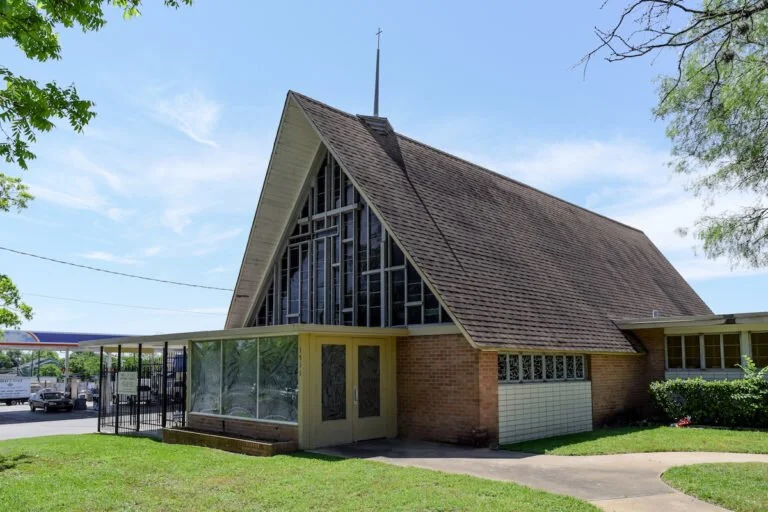Midcentury Modern Sacred Places
In the years following World War II, a mobile and growing population in Texas found the need to build new churches and synagogues in urban, suburban, and even small rural communities across the state. Texas architects designed new structures that reflected a modern age, employing innovative construction methods and new materials resulting in striking progressive sacred places. But in recent years, urban populations have changed, and the demands of 21st-century congregations often cannot be contained in the buildings of the mid-twentieth century. As a result, Midcentury Modern Sacred Places are threatened with destruction as congregations relocate or consolidate and their often valuable property is sold for redevelopment.
Across Texas, opportunities abound to find creative new uses for midcentury modern sacred places, which are not only significant cultural and historic sites but also represent some of the most important architectural achievements of mid-20th century in the state. Efforts by local midcentury modern advocacy groups and state and national organizations dedicated to sacred places are working to slow the loss of these buildings. Examples of creative partnerships and adaptive uses need to be widely publicized, and the needs of struggling congregations shared with those who can help support the continued use of these buildings.
An example of this trend in Austin is Prince of Peace Evangelical Lutheran Church, constructed in 1955-56. It was designed by local architect Eugene Wukasch who was active nationally in the development of modern church architecture in the United States. The building was likely the earliest example of an “A-frame” or “tent-form” church in Central Texas and features unique art glass by Octavio Medellín, the renowned Mexican-American artist. The church has closed and is for sale, and without any local designations, the property could be demolished.

